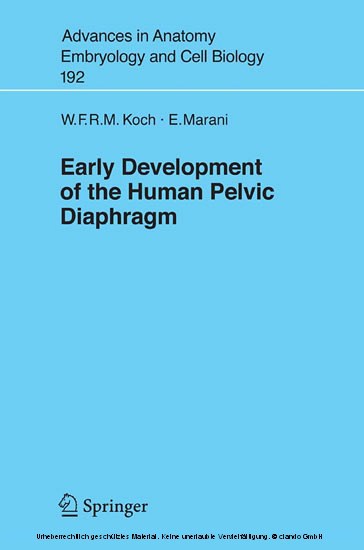Early Development of the Human Pelvic Diaphragm
A sound and detailed knowledge of the anatomy of the pelvic floor is of the utmost importance to gynecologists, obstetricians, surgeons, and urologists, since they all share the same responsibility in treating patients with different pathological conditions caused by pelvic floor dysfunction. The most common clinical expressions of pelvic floor dysfunction are urinary incontinence, anal incontinence, and pelvic organ prolapse. Most often these clinical expressions are found in women, and they are briefly discussed below based on the outline presented in the Third International Consultation on Incontinence, a joint effort of the International Continence Society and the World Health Organization.
Established potential risk factors are age, childbearing, and obesity. The pelvic floor plays an important role in these risk factors. There is evidence that the pelvic floor structures change with age, giving rise to dysfunction. Pregnancy, and especially vaginal delivery, may result in pelvic floor laxity as a consequence of weakening, stretching, and even laceration of the muscles and connective tissue, or due to damage to pudendal and pelvic nerves. Comparable to pregnancy, obesity causes chronic strain, stretching, and weakening of muscles, nerves, and other structures of the pelvic floor.
1;List of Contents;6 2;Abbreviations;9 3;1 Introduction and Aim;10 4;2 Fetal Period;24 5;3 Embryonal Period;57 6;4 Conclusions;92 7;5 Full Color Illustrations;108 8;References;118 9;Subject Index;122
Koch, Wijnand F. R. M.
Marani, Enrico
| ISBN | 9783540680079 |
|---|---|
| Article number | 9783540680079 |
| Media type | eBook - PDF |
| Edition number | 2. Aufl. |
| Copyright year | 2007 |
| Publisher | Springer-Verlag |
| Length | 114 pages |
| Language | English |
| Copy protection | Digital watermarking |











